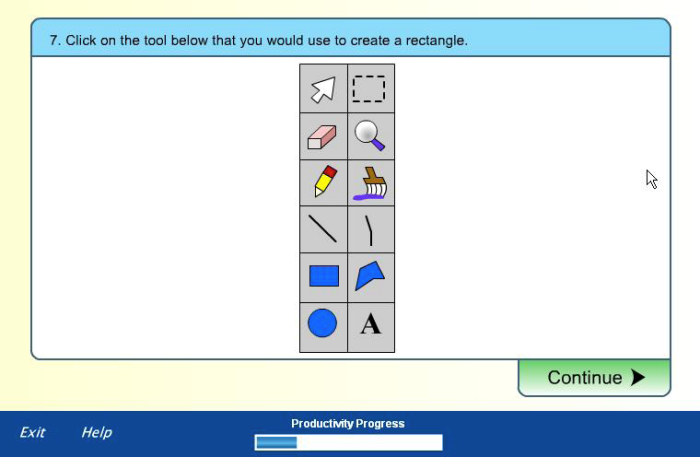From the Item Bank |
||
The Professional Testing Blog |
||
The Hotspot – Why, When, and How to Use this Item TypeJanuary 27, 2016 | |OverviewIn a Hotspot (HS) item the examinee responds to the question by clicking directly on an image. This is often a useful item type when measuring visual content and it has the added benefit of reducing the potential for cueing or guessing, since test-takers are free to click on any part of the image. When to UseThe HS is only one of several item types that include images. Multiple-choice and the multiple response items can also include graphics in the stem, or as the response options. The unique feature of the hotspot item type is that examinees respond by selecting an area or location within the image, rather than selecting from a set of response options. One advantage of this approach is that the image can provide more distractors than a 4- or 5-option selected response item type, as can be seen in this example.
Another advantage of the HS is the potential for the image, and the “distractors” that are included, to have higher fidelity to practice. For example, an item could prompt candidates to select the lung mass on a chest x-ray. Since candidates can select anywhere on the image, in a sense every part of the imageexcept the correct region serves as a realistic distractor. There are two major types of HS items that an exam program may choose to use. These two HS types differ in how obvious the “graphical response options” are. The image above is an example of a discrete HS item, in which the graphical response options are obvious and distinct. Other discrete HS examples could include a political map or an organizational chart. In a non-discrete HS item the image has less distinct regions. Examples of this type could include an image of a chest x-ray, a site plan, or a brain scan. Issues to ConsiderThe HS item type is built into many popular CBT software programs, which simplifies some aspects of its use on an exam, and HS items are usually scored dichotomously which further simplifies their use. However, one particular change in item writing needed for the HS is that item writers must specify the graphical region that comprises the key. A software function built into the CBT program makes this task as simple as using the drawing tool in a program like PowerPoint. For non-distinct HS items, decisions about the boundary regions for “correctness” may need further consideration. For example, if the lung mass in the chest x-ray gradually changes from dark and tumorous to light and healthy, at what point in this change does an examinee’s selection switch from being correct to incorrect? Another issue to consider for the HS item is whether item writers should be asked to define graphical distractor regions when they indicate the graphical key region within the CBT software. Candidates do not see any of these defined markers on the item image, but if distractor regions have been specified by an item writer and stored in the item bank, then distractor analysis for the HS item is far more informative. Without this specification, distractor analysis is very limited and it can be difficult to identify problems with an item or to make sound improvements. The biggest weakness of the HS item type is its susceptibility to use in knowledge-level items, rather than higher-order thinking. To counter this tendency, it will be helpful to provide item writers with several examples of items in their field where the HS item targets higher cognitive levels. These materials could be part of HS-specific item writer training materials. In addition, item writing guidelines for the HS could be prepared to address the issues discussed above, as well as specifying technical characteristics such as image file type or size. (More information about item writing guidelines for the HS item type can be found within the article available on this bottom of this page. SummaryThe HS item type has good utility when an exam program’s content includes visual material. This is especially true when reducing cueing and/or guessing is valued. As a further advantage, candidates often respond positively to an increased use of visual materials on an exam and to the interactivity of HS items. These factors make the HS item worth considering. This post is part of the series “Alternative Item Types.” Tags: Alternative Item Types, ATP 2018, ATP17, Item TypeCategorized in: Item Type, Item Writing |
||



Comments are closed here.